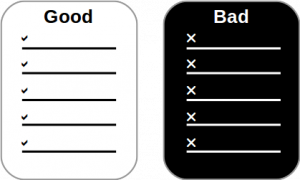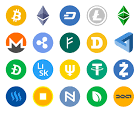Alternative Social Media Framework
 Privacy & censorship concerns make it obvious we need alternative social media systems. The design of a good alternative to existing social media services must be better than current systems and better than past systems such as blogs.
Privacy & censorship concerns make it obvious we need alternative social media systems. The design of a good alternative to existing social media services must be better than current systems and better than past systems such as blogs.
Social media became very popular for publishing content but social media services puts content creators at the mercy of the the people who run those services. Facebook, YouTube, & Twitter have censored many people because of religious & political opinions in arbitrary ways They’ve even censored users because of different tastes of humor. People running the social media services can & do censor anyone they feel they don’t like. Additionally these sites collect & use your data in ways you might not want. Facebook has recently been exposed but all of them do it. Data collection & selling that data is their business model.
You could create your own blog but there are many negative points to that. It’s harder for people to discover your content, you must pay for the bandwidth which might suddenly be very expensive if your content is very popular, and it is hard to be anonymous. A new system must improve on all the weak points of social media services and the traditional paid web hosting model.
Improvements
- Low / no cost
- Anonymous / Privacy
- Verify authorship
- Detect lost content (censorship)
- Detect alteration / forgery
- Prevent lost content (censorship)
- Avoid SPAM
- Discover desirable content
- Payment system
Components of an Alternative Social Media System
Encryption
GNUPG is free open source encryption software that allows people to securely send private messages to other users of GPG using any system such as email, social media, SMS, or even paper. A less well known feature is signatures. You can digitally sign a message to prove you sent it. If a content creator wants to remain anonymous they can publish their content with a GPG signature so that anyone can verify the content came from the same person but not know who it was. All they need is that person’s public encryption key.
Peer-to-Peer Networks
BitTorrent. ![]() The problem of bandwidth was solved a long time ago with BitTorrent. The BitTorrent protocol is free & open source and there are many free & open source clients for computers & mobile devices.. If instead of publishing your content you only publish a GPG signed Torrent to your content then people can use BitTorrent to download and share your posts. This automatically provides free bandwidth for popular content. You can host your content from your home computer. It also prevents intentional censorship or accidental loss of your content by spreading copies all over the Internet to anyone who has downloaded it.
The problem of bandwidth was solved a long time ago with BitTorrent. The BitTorrent protocol is free & open source and there are many free & open source clients for computers & mobile devices.. If instead of publishing your content you only publish a GPG signed Torrent to your content then people can use BitTorrent to download and share your posts. This automatically provides free bandwidth for popular content. You can host your content from your home computer. It also prevents intentional censorship or accidental loss of your content by spreading copies all over the Internet to anyone who has downloaded it.
BlockChains
 BlockChain as a concept is more than just cryptocurrencies such as BitCoin A personal blockchain of your content can be created by including a hash of your previous post in each new post all signed with your GPG private key. Anyone who has your public key, which you can include with the post, can verify that none of your content is missing & that it was published by you even if you remain anonymous. This type of block chain doesn’t require miners so it scales infinitely. Only the publisher adds new blocks to their own block chain. Anyone using GPG can verify your block chain for changes or deletions.
BlockChain as a concept is more than just cryptocurrencies such as BitCoin A personal blockchain of your content can be created by including a hash of your previous post in each new post all signed with your GPG private key. Anyone who has your public key, which you can include with the post, can verify that none of your content is missing & that it was published by you even if you remain anonymous. This type of block chain doesn’t require miners so it scales infinitely. Only the publisher adds new blocks to their own block chain. Anyone using GPG can verify your block chain for changes or deletions.
Using this type of blockchain to reference material can also reduce “fake news.” If the person doesn’t provide a link to signed content you can suspect they are not quoting it correctly. Expectation of verifiable sources will reduce misquoting.
Fraud Prevention. BitTorrent verifies your content is not altered by using a hash, GPG can also be used to do this plus prove you published it. This prevents people from altering your content and falsely claiming you posted something you did not say or pretending to be you even if you remain anonymous.
Whitelisting / Blacklisting
 Whitelisting. SPAM is a problem with any communication system especially one that allows people to anonymously send messages. One technique to avoid SPAM is Whitelisting. Content from people on your whitelist are approved. The opposite is Blacklisting. You can block content from someone on your blacklist.
Whitelisting. SPAM is a problem with any communication system especially one that allows people to anonymously send messages. One technique to avoid SPAM is Whitelisting. Content from people on your whitelist are approved. The opposite is Blacklisting. You can block content from someone on your blacklist.
Discovery is a big problem for the traditional private blog approach of content publication. One of the biggest advantages of using Social Media is sharing content with other people. You can find things you want to see and other’s can find things you want to share. Shared Whitelists & Blacklists can provide a reputation system for discovering new content & filtering SPAM.
You can publish your Whitelist & Blacklist signed with your private key so people can verify who’s it is. If they like you they can use your lists to discover other content they might like or avoid content they don’t. The combination of lists from everyone you follow creates your own personal search system for finding desirable new content.
Some very sophisticated systems could be created to determine content you might like based on what you like and the likes of others. The key difference with this Alternative Social Media system is you can remain completely anonymous.
Privacy has two key elements, your identity and your actions. You can use a different anonymous identity for watching than from creating.  You can create as many identities as you want and there is no connection between them unless you choose. Your actions can be hidden with a VPN either build into this system or an external VPN you choose. This greatly increases your privacy. There are many paid options available and TOR is a free open source (FOSS) option.
You can create as many identities as you want and there is no connection between them unless you choose. Your actions can be hidden with a VPN either build into this system or an external VPN you choose. This greatly increases your privacy. There are many paid options available and TOR is a free open source (FOSS) option.
Cryptocurrency
 The obvious mechanism for paying content creators is cryptocurrencies. Content creators can remain anonymous and still receive payments. This can support distributed versions of memberships such as Public Broadcasting or Patreon, Crowdfunding such as Kickstarter or Indiegogo, commercials from paid advertisers, private newsletters, and many more business model possibilities.
The obvious mechanism for paying content creators is cryptocurrencies. Content creators can remain anonymous and still receive payments. This can support distributed versions of memberships such as Public Broadcasting or Patreon, Crowdfunding such as Kickstarter or Indiegogo, commercials from paid advertisers, private newsletters, and many more business model possibilities.
Summary
Widely available proven effective Free Open Source Software (FOSS) can be combined to create a distributed alternative social media that improves on all of the weaknesses of existing systems. No new technology is required. Easy to use wrappers to connect these tools can quickly be created. What I’ve described is a framework of a possible alternative social media system. The fundamental concept is a distributed network to eliminate dependency on centralized power of either large corporations or government. That is the key to both privacy & censorship concerns as well as inclusiveness & availability problems.
I welcome discussion of this topic and offers to participate in building systems based on this framework.




 Predictive Innovation Training
Predictive Innovation Training Predictive Innovation: Core Skills Book
Predictive Innovation: Core Skills Book RoundSquareTriangle.com
RoundSquareTriangle.com